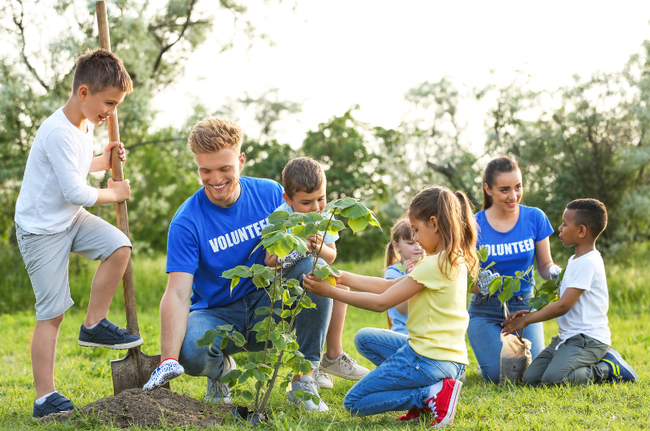Volunteering may be the answer to bringing people together, in a time where there seems to be more division than ever. The Census Bureau and AmeriCorps report that while formal volunteering rates have declined, informal volunteering rates have remained steady. Last year, I discussed the many personal benefits to volunteering (longer lifespan, potential job skills, increased self-confidence, etc.). This year as National Volunteer Month comes to a close, I suggest looking at it from a different angle.
By volunteering, formally or informally, you are strengthening our community. We build social capital together. Dr. Nathaniel, a 4-H Advisor in Los Angeles county and researcher of social and community capital, writes, “Youth who are engaged in community service tend to have higher degrees of social capital. That is, youth who are engaged in at least 5 community service projects where they are involved with the conceptualization, design, planning, and execution of a community service project are more connected to community networks, resources, and institutions.” Furthermore, Dr. Worker, a 4-H Advisor in Marin, Sonoma, and Napa counties, found that besides skill development, increased well-being, and gratification from working with youth and other adults, 4-H volunteers strengthened social development, including developing friendships, strengthening family connections, and ties with the broader community.
As a life-long volunteer myself, I have experienced these things firsthand. Over the years, in four different communities, I've spent time volunteering as a way to make connections and learn about my neighbors. Some highlights have been teaching Red Cross First Aid and CPR classes, starting a livestock evacuation team, and being a foster dog mom. In each instance, I've met people with similar interests and passions for making a difference, and even formed lasting friendships. I also learned many of the people working side by side with me had different political views, different religions, and/or different worldviews. And it didn't matter where we differed because we were able to focus on the task at hand. Helping where help was needed.
Whether it be teaching a child about robotics in 4-H or helping animals find their fur-ever home, when you volunteer for a community organization that you're passionate about, you are inevitably making connections to others with the same goal in mind. When you're out picking up trash with a stranger, you're able to join forces, start a task, enjoy each others company while working, and feel accomplished together when the work is complete. Volunteering has the potential to break down the walls between us. It can bridge the gaps.
As the nation sees volunteer rates decline, I implore youth and families to find volunteer opportunities within their community though 4-H or otherwise. The services many non profits provide wouldn't be possible without volunteers; services the community has come to rely on-like food assistance, youth activities, veterans' services, fire and disaster safety, and more. Remember that not only will you be helping fill a specific need in the community, you'll also be building a strong one.
JoLynn Miller is a 4-H Youth Development Advisor with University of California Agriculture and Natural Resources. She is responsible for four counties in the Central Sierra and focuses her research on volunteerism, volunteer development, youth retention, and working with youth in the juvenile justice system. You can contact her at 209-533-5686 or jlmiller@ucanr.edu.

